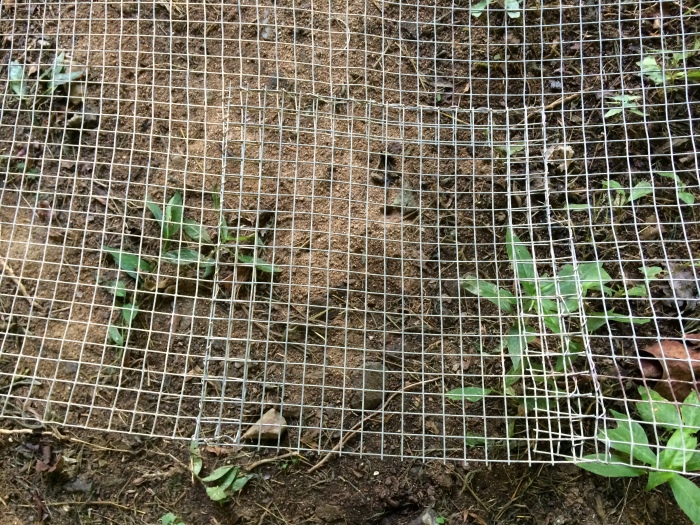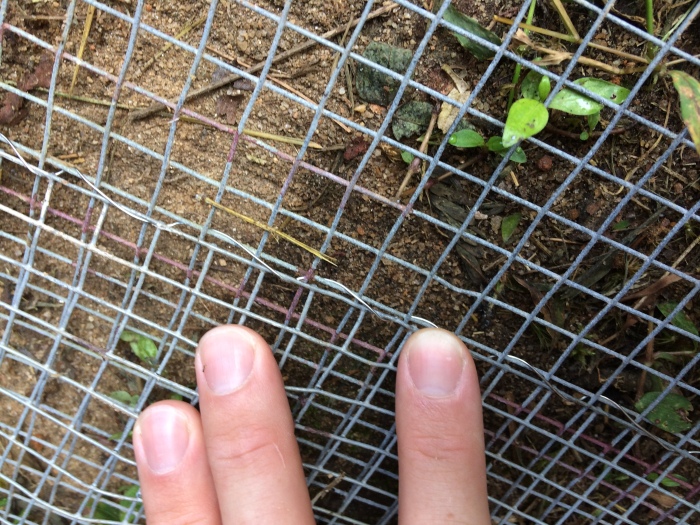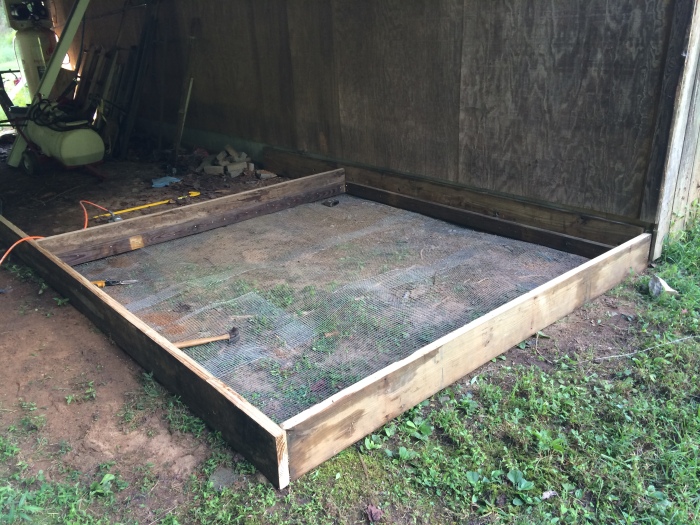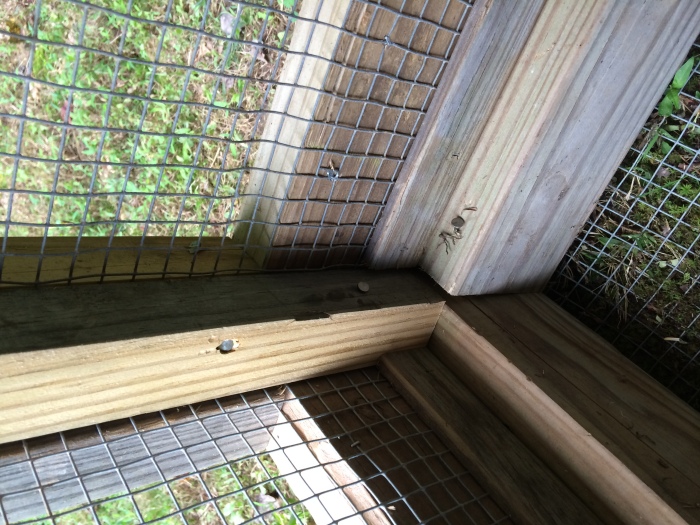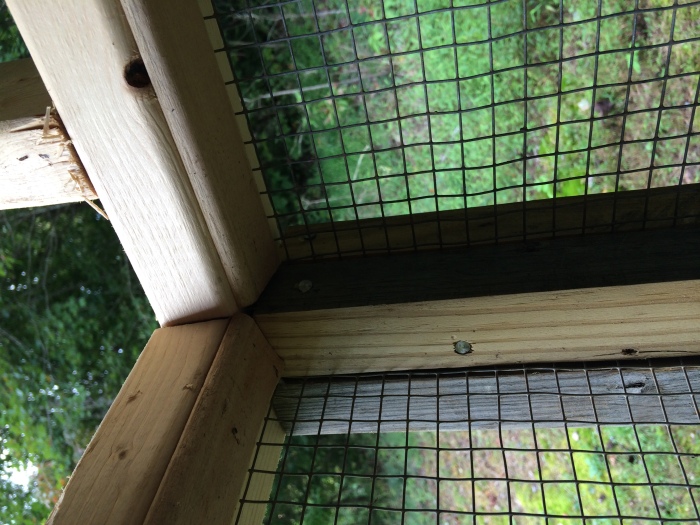We learned several lessons from our first chicken coops, and we designed our new house to be more safe and comfortable for the girls, and less demanding for us to service and maintain. Our recent property expansion included a storage building, and rather than make the coop a stand-alone structure, we decided to build it as a temporary enclosure on the porch of that building.
This strategy spared us from having to build one wall and a roof.
Even with our first chicken houses we knew that rodent and pest protection were as important as predator protection. We used 1/2″ hardware cloth in those houses, which was effective against mice. A larger-than-usual flood destroyed one of our old houses, but I was able to salvage enough hardware cloth from it to make a floor for the new coop. There were a few damaged areas in the large pieces, so I cut those areas out to make clean rectangles, then attached slightly oversized patches with stitches of stainless wire. It took me about half a day to make the single large floor piece this way, though it would have gone a little faster if I had been using new hardware cloth instead.
For the next step I made a box out of treated lumber that we salvaged from our former driveway bridge.
The concept for this house is to have hardware cloth for the bottom few feet, and siding from there up. We live in a moderate climate, so drafts in extreme cold are less of a concern than having good ventalation. To help make the coop mouse-tight and more predator resistant, all of the areas where hardware cloth meet the wood are made with a sandwich of wood. For an example, see the picture below. In that picture, the left side of the frame is “up” and we are looking at the floor of the coop on the right. The floor piece bends up to fit between the outermost 2×8 and the inner 2×4. The 2×2 that runs vertically sandwiches the two lower wall pieces. The bottom of the wall hardware cloth is sandwiched between the 2×8 and a piece of 2×3/8 lath that I ripped on the table saw. All of the wood near the ground is treated. There is some concern about the chickens having access to treated lumber, but those concerns are overridden by the need to have the house stay together. We use a composting deep litter of wood shavings on the floor that is several inches thick, so the 2x4s pictured below are almost entirely buried.
The second picture shows how the hardware cloth terminates at the top of the opening.
 Happy Egg Farm
Happy Egg Farm